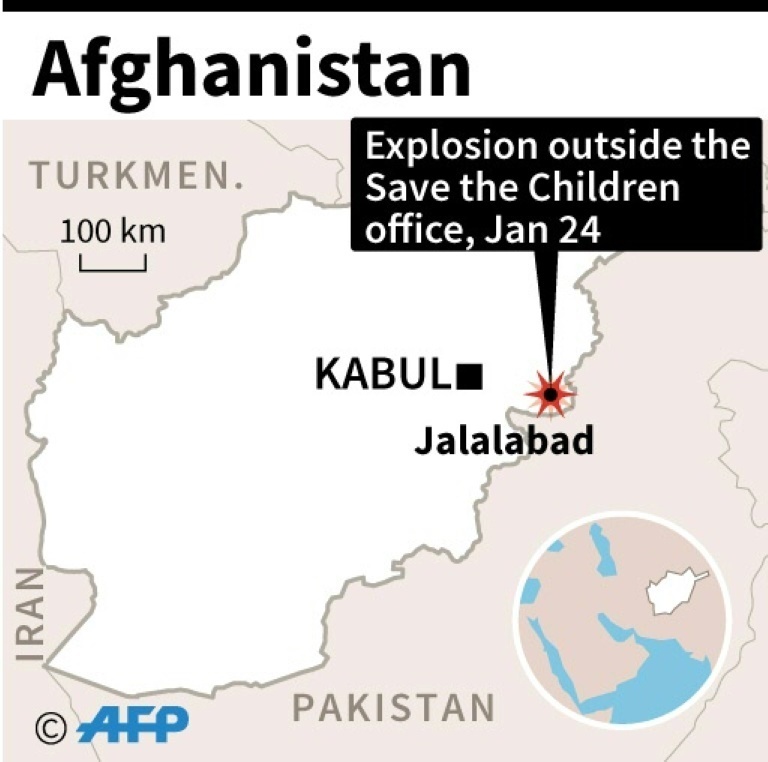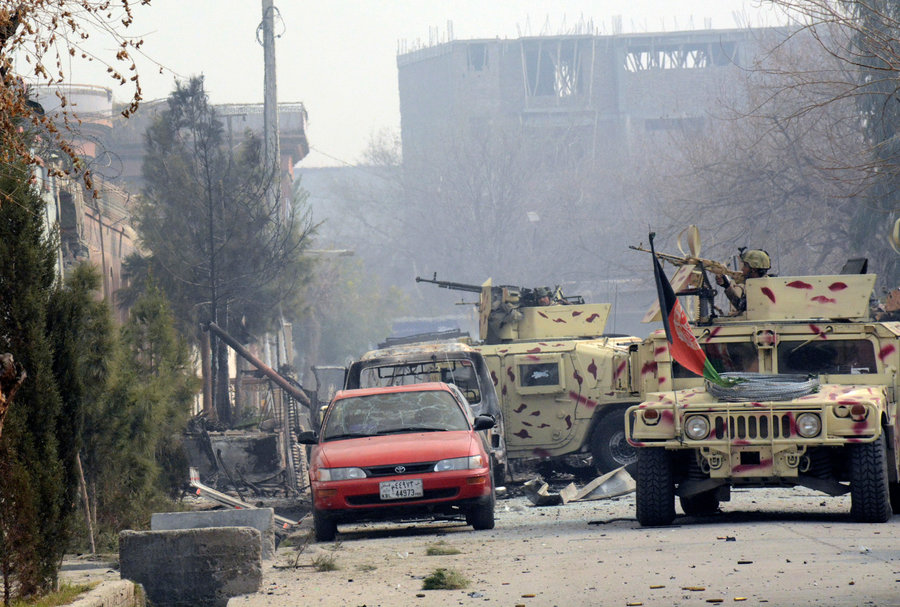
The Latest Spat of Terror Attacks Threaten to Alter or Halt the Provision of Humanitarian Aid
On Wednesday, January 24, 2018, the headquarters of the humanitarian aid organization, Save the Children, was attacked by ISIS. The attack occurred in the city of Jalalabad located within Nangarhar province, Afghanistan. The official death toll currently sits at six and over twenty-five people were injured during the assault. The attack began with a suicide bombing outside of the organization’s headquarters destroying a van belonging to the organization. Following the bombing, gunmen stormed the headquarters building. The attack lasted a total of ten hours until the Afghani Security forces subdued the assailants. Four of the group’s employees were killed in the attack.

The attack was initially thought to be the work of the Taliban, but the Taliban denies responsibility. On Wednesday, Taliban spokesman Zabihullah Mujahid insisted the bombing and assault were not carried out by the Taliban. (1) The Islamic State claimed responsibility for the attack in Jalalabad via the group’s news agency Amaq.
Following the attack, Save the Children announced that it would temporarily halt all operations in the country. Carolyn Miles, President and CEO of Save the Children, responded to the attack on Wednesday saying, “We have temporarily suspended our operations across the country following today’s events, however, we remain fully committed to helping the most deprived children of Afghanistan.” (2) On Thursday, Carlos Carrazana, the Chief Operating Officer of Save the Children, assured observers that the organization would not be pulling out of Afghanistan.

The staff members of Save the Children are the latest victims of the evolving phenomena of extremist violence perpetrated upon humanitarian aid groups and NGOs. High-profile attacks upon aid groups burst into the public consciousness afresh in 2003 following a series of attacks upon the Red Cross and UN headquarters in Baghdad, Iraq. At the time, such attacks were beyond the pale; this is no longer the case. Aid organizations are now well aware that they are targets and can become victims of extremist violence. While the media profile of attacks upon aid groups grew, so did public perceptions of their frequency and impact.
The number of documented violent attacks on NGOs rose sharply in 2013. According to the Aid Worker Security Report, 475 aid workers were the victims of violence in 2013. (3) While the profile and prominence of these attacks in media and news coverage remain large, it appears that the number of attacks and their efficacy is on the decline following the 2013 spike. In 2016, 288 Humanitarian aid workers were killed or injured in violent attacks. (3)

Zarghoona* is a 13 year-old girl, in grade 6 at school in Afghanistan. She has four brothers and four sisters. She has been receiving training in Child Focused Health Education (CFHE) from Save the Children. *name changed for protection (PRNewsfoto/Save the Children)
Save the Children’s decision to not conclude its operations in Afghanistan speaks to the dedication of the organization’s staff to its mission, but it might also expose a disconnect between the media narrative surrounding attacks on humanitarian aid organizations and NGOs, and reality as these organization’s see it. The number of attacks upon aid workers in 2016, when compared to the number of attacks carried out between 2008 and 2015, excluding 2013, is fairly consistent. The relative consistency of such attacks is even more striking when we consider the large spike in attacks carried out in 2013.
Any attack on humanitarian aid workers is an attack too many, however, the media frenzy associated with these sorts of events may hurt aid groups rather than help them. The larger a group’s profile may be, the more value there will be in attacking said group. In addition to increasing the profile and then vulnerability of aid groups, intensive media coverage of attacks may exacerbate difficulties attracting funding and recruits. Several aid groups have already begun to scale down their operations in Afghanistan, as the result of violence. An outsized discussion of risk may further damage humanitarian efforts, hindering the provision of humanitarian aid. Nonetheless, humanitarian aid remains a significant tool in combatting extremism and radicalization.
Sources:
- One dead and 14 injured after charity offices attacked in Afghanistan. (2018, January 24). Retrieved January 26, 2018
- Update on Attack at Save the Children in Jalalabad, Afghanistan. (n.d.).
- Stoddard, A., Harmer, A., & Czwarno, M. (2017, August). Behind the attacks: A look at the perpetrators of violence against aid workers.
- ISIL claims attack on Save the Children in Jalalabad. (n.d.). Retrieved January 26, 2018,
- Salahuddin, S. (2018, January 24). Islamic State attacks Save the Children charity in Afghanistan. Washington Post.
- Death Toll Rises to 6 In Save The Children Attack In Jalalabad. (n.d.). Retrieved January 26, 2018
- Why are aid organizations increasingly targeted? (n.d.). Retrieved January 26, 2018,
- Ogwude, E. C. (2015). Twelve Years Later: Afghan Humanitarian Aid Workers on War on Terror (Ph.D.). Nova Southeastern University, United States — Florida.
- Thomas F. Lynch III (2015) After ISIS: Fully Reappraising U.S. Policy in Afghanistan, The Washington Quarterly, 38:2, 119-144, DOI: 10.1080/0163660X.2015.1064714
